-
《PyTorch深度学习实践》第三讲 梯度下降算法
问题描述
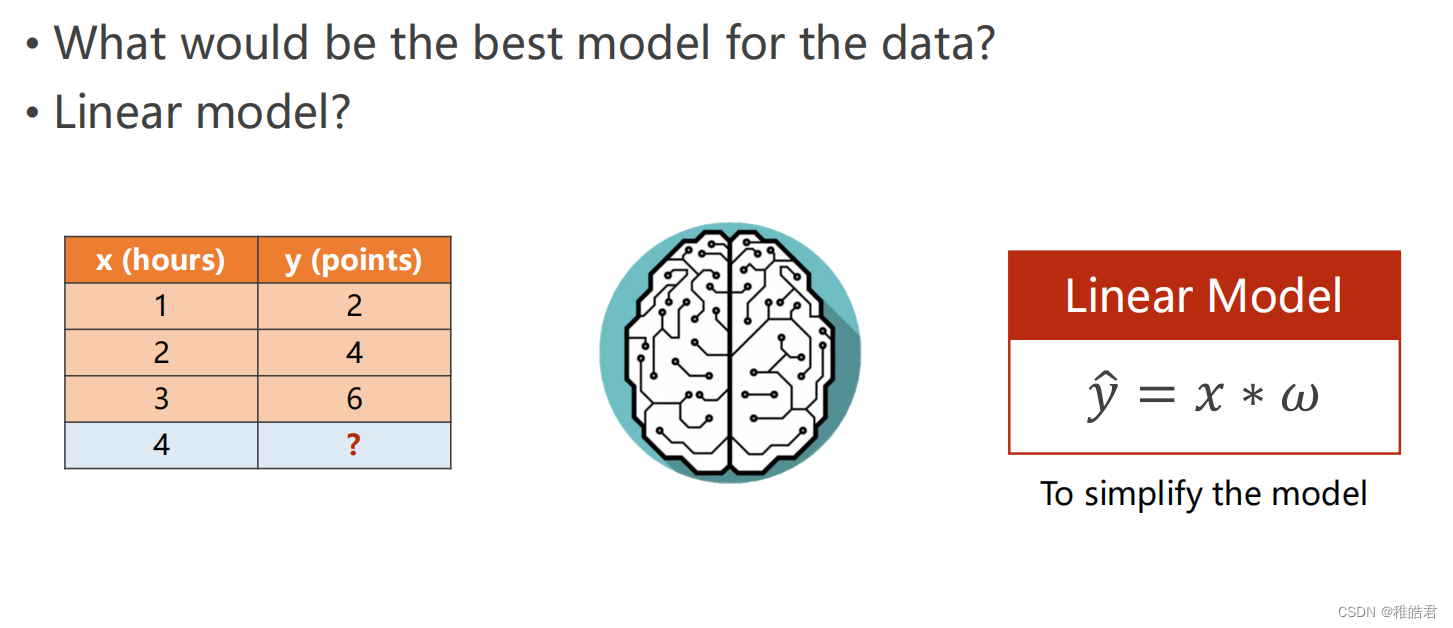
梯度下降
问题分析
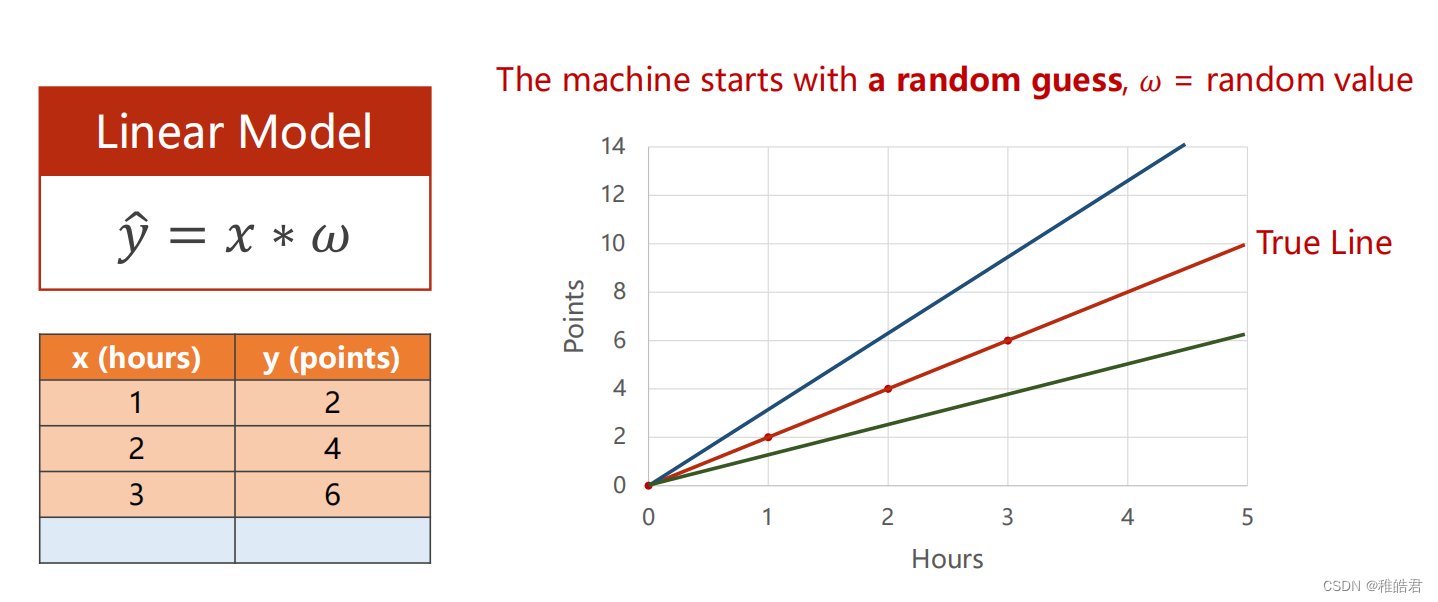
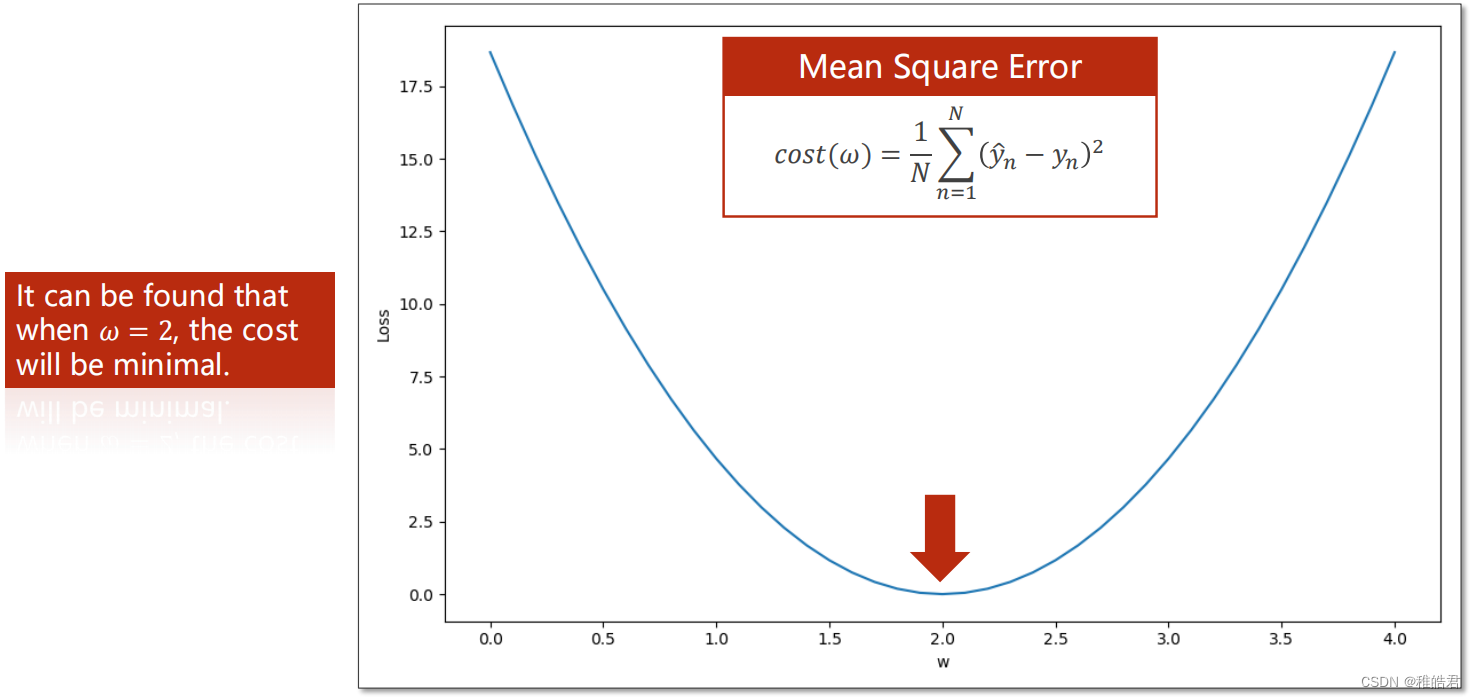
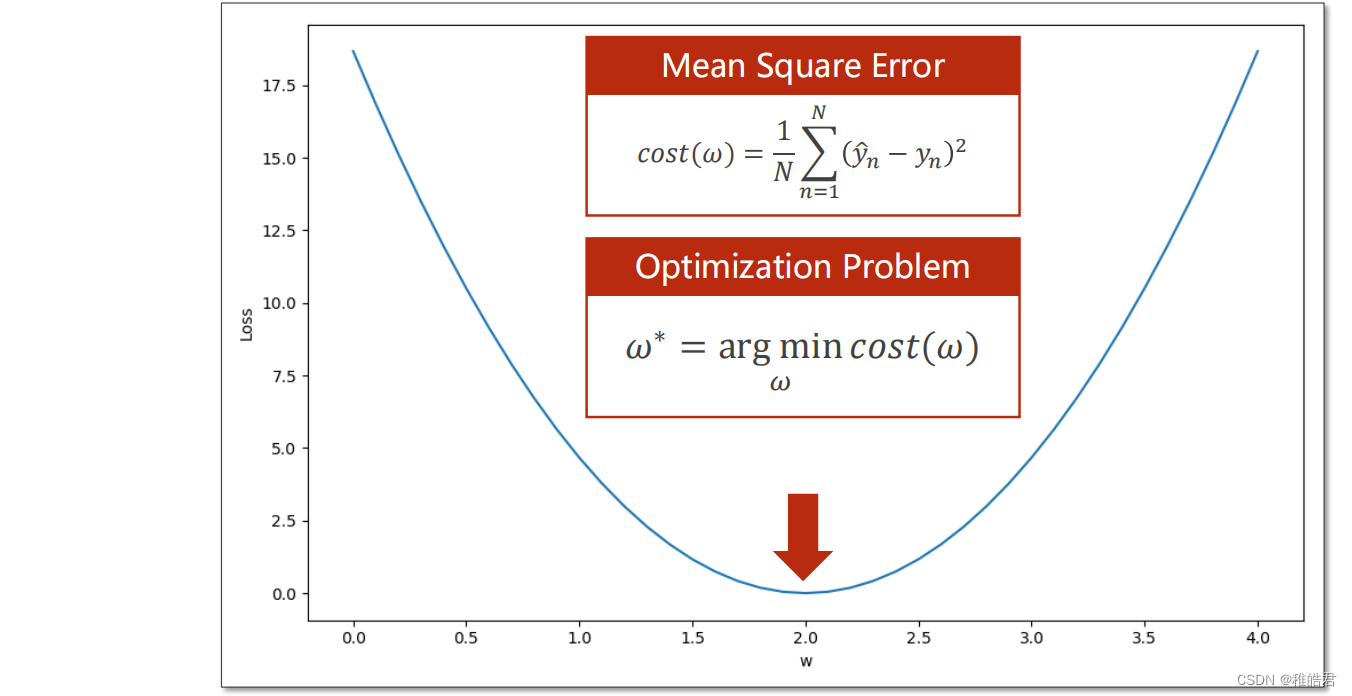
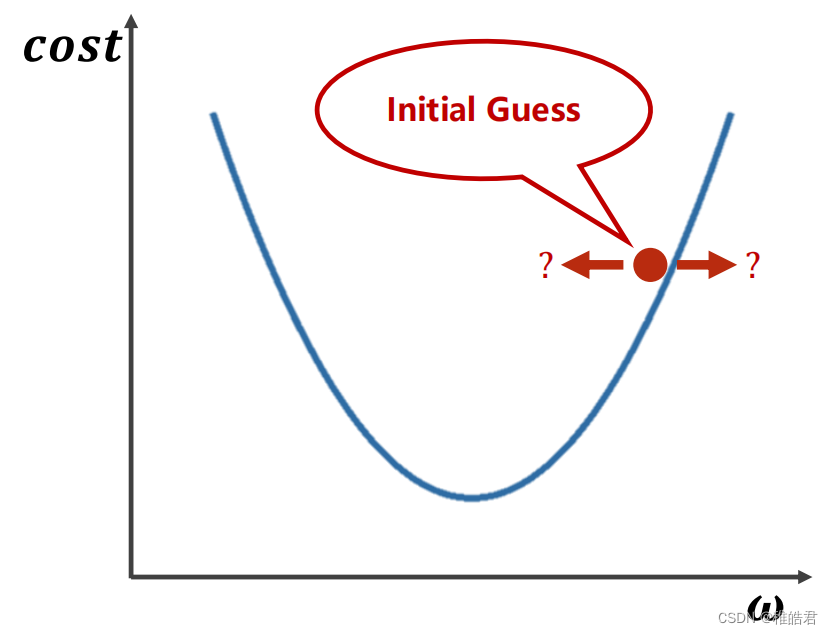
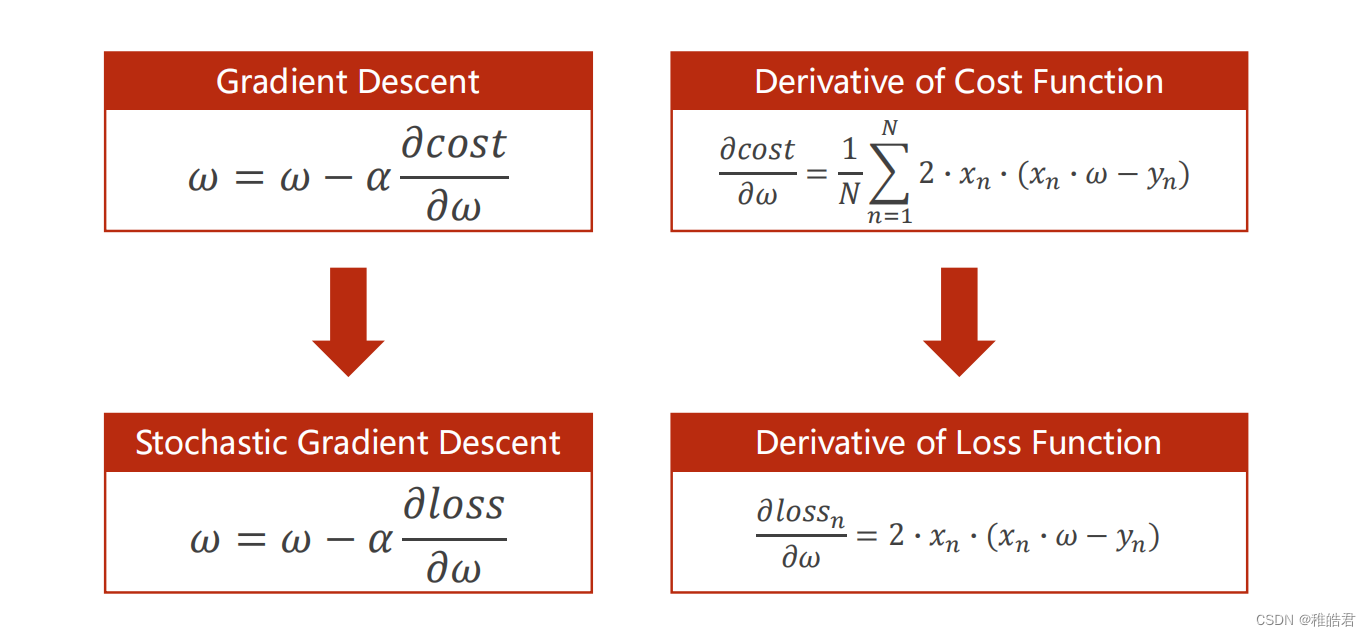
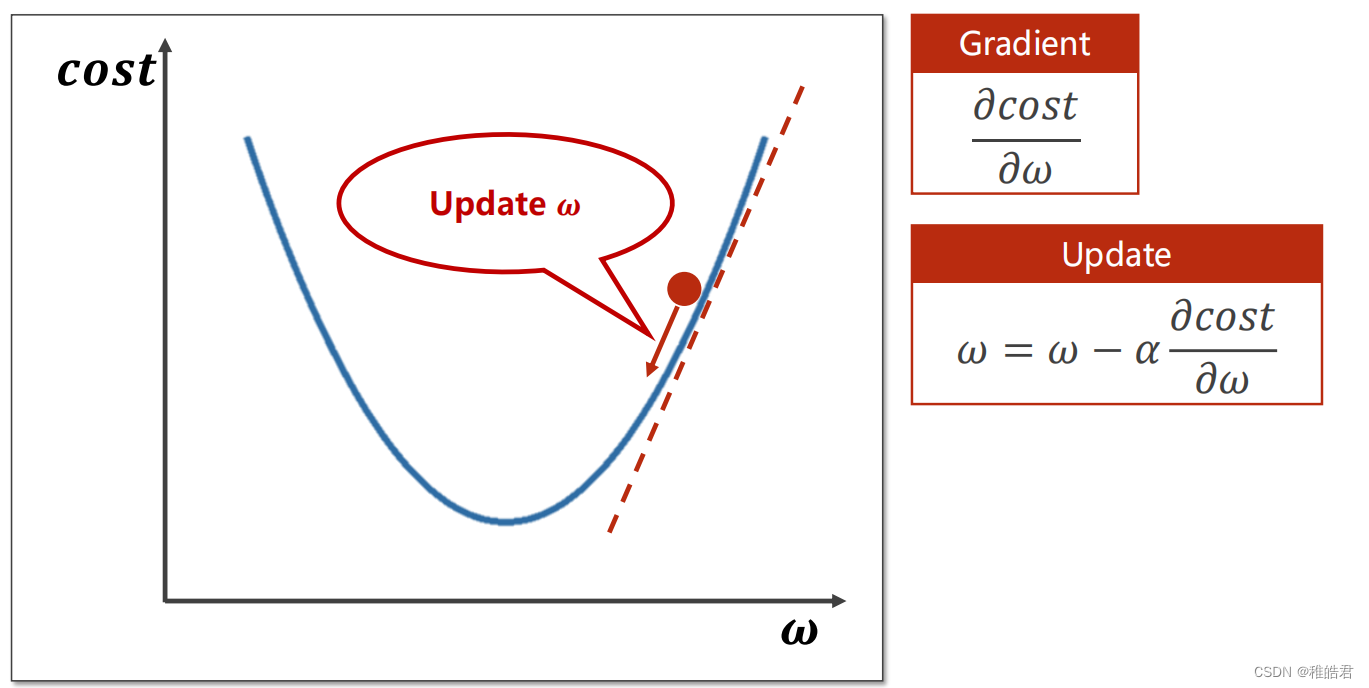
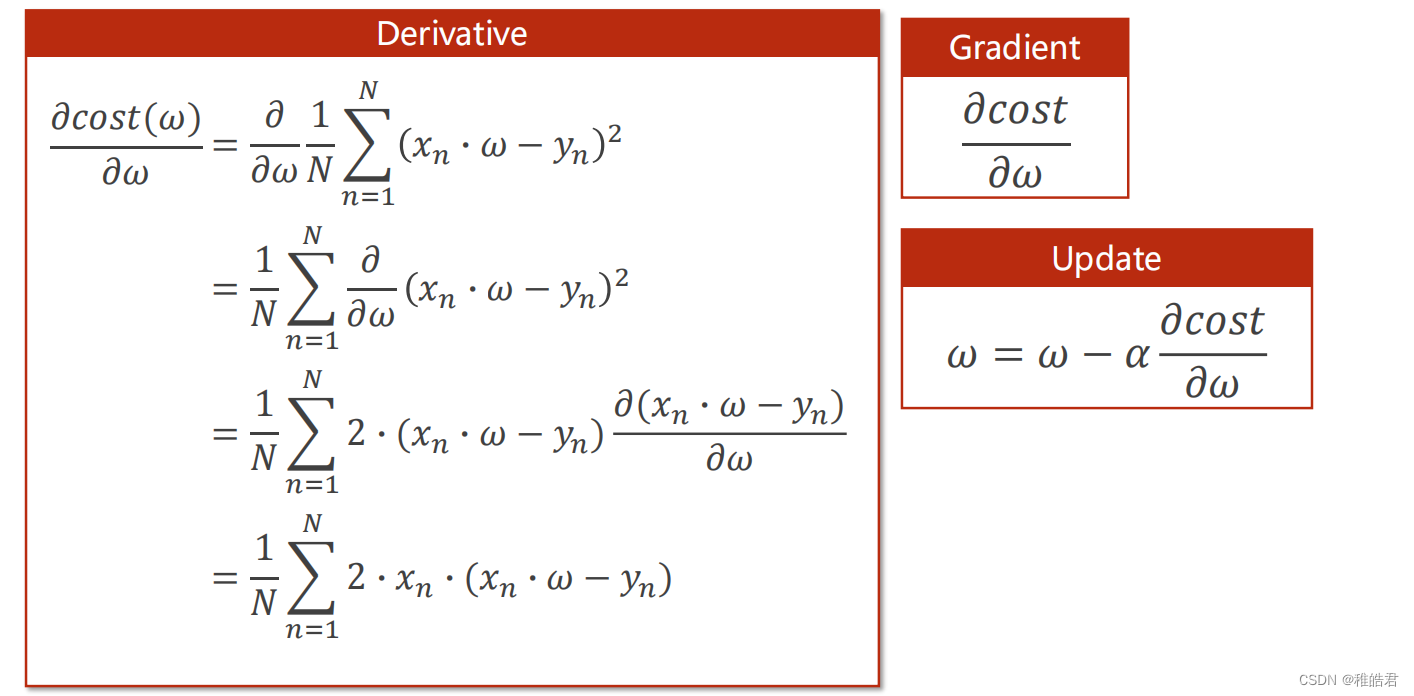
编程实现
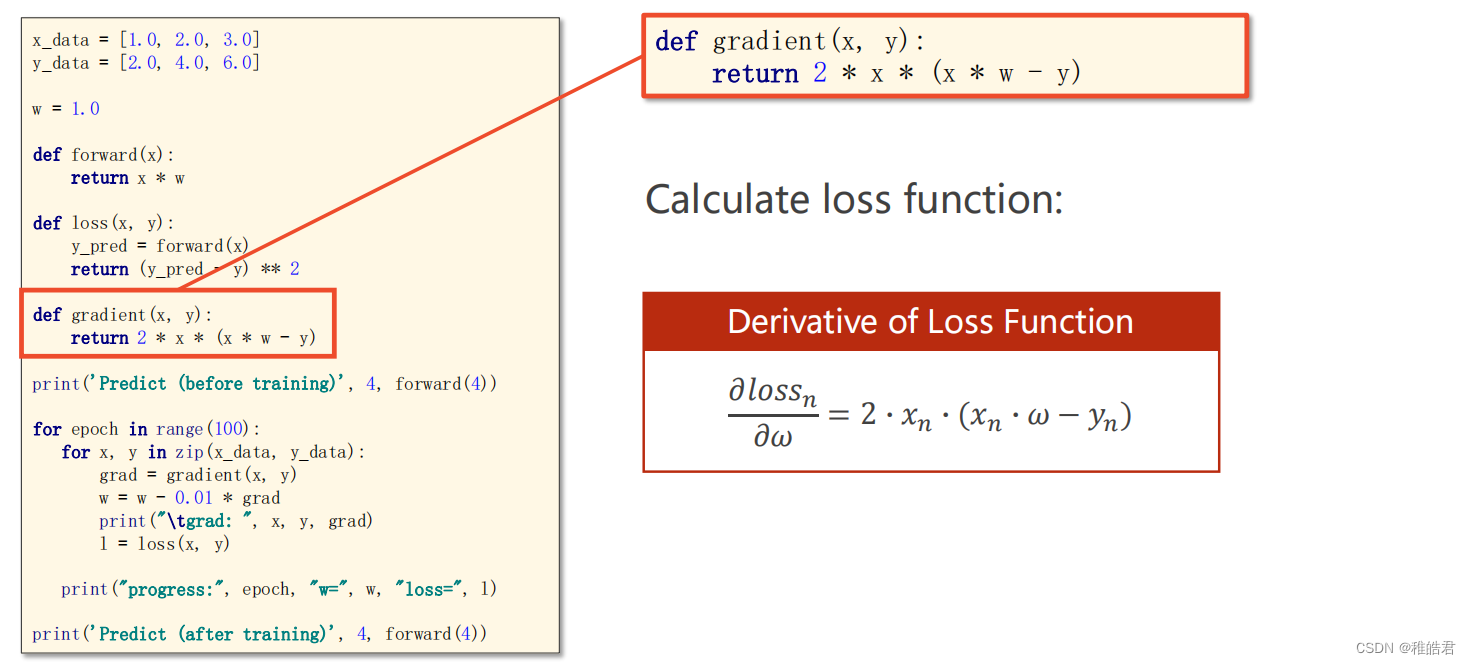

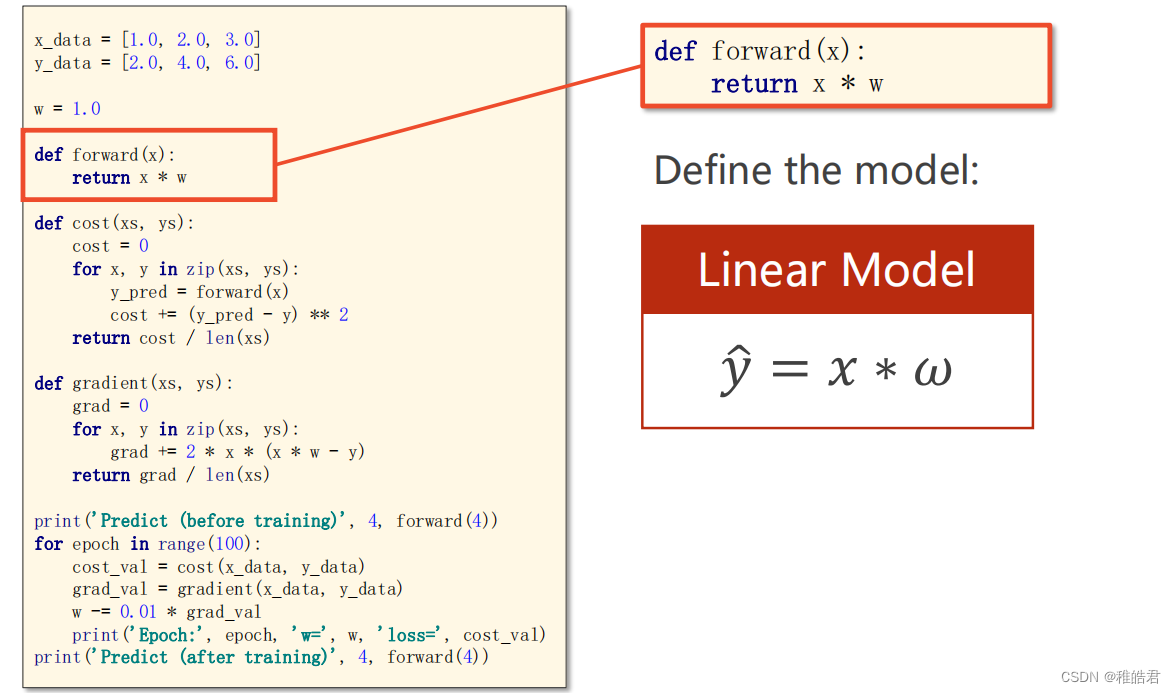

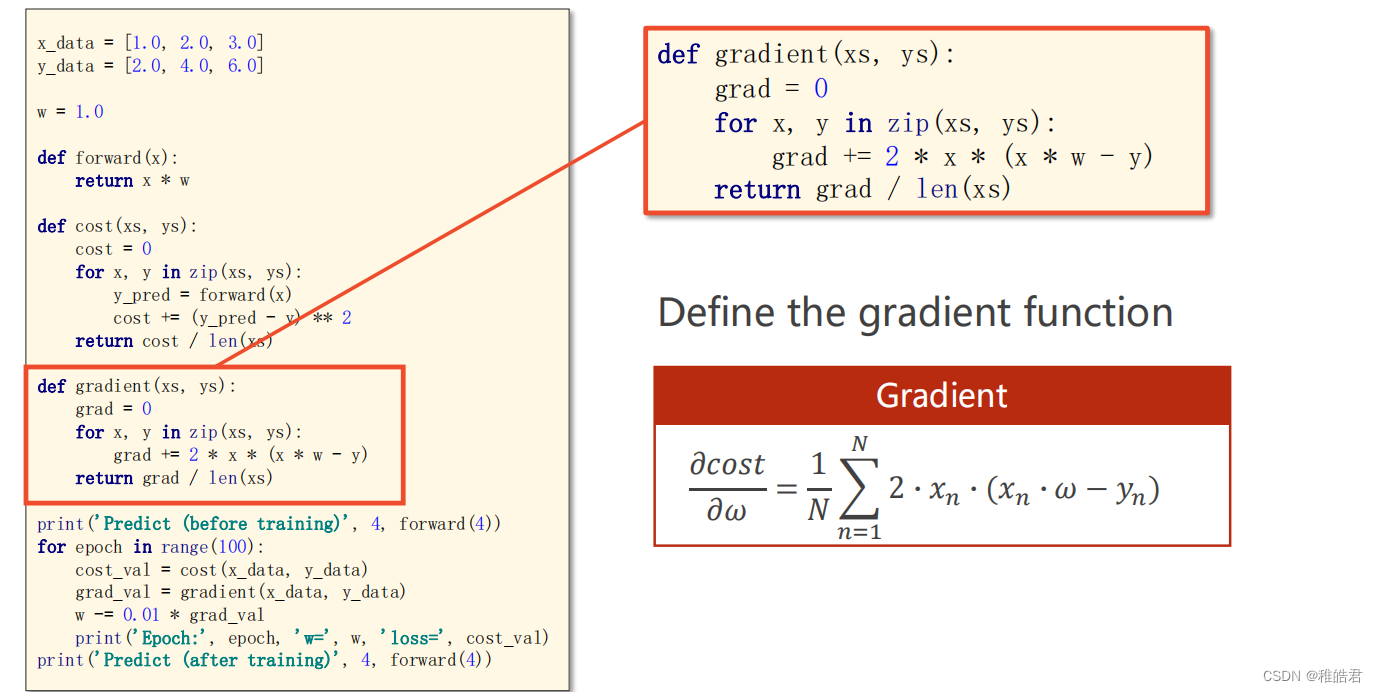
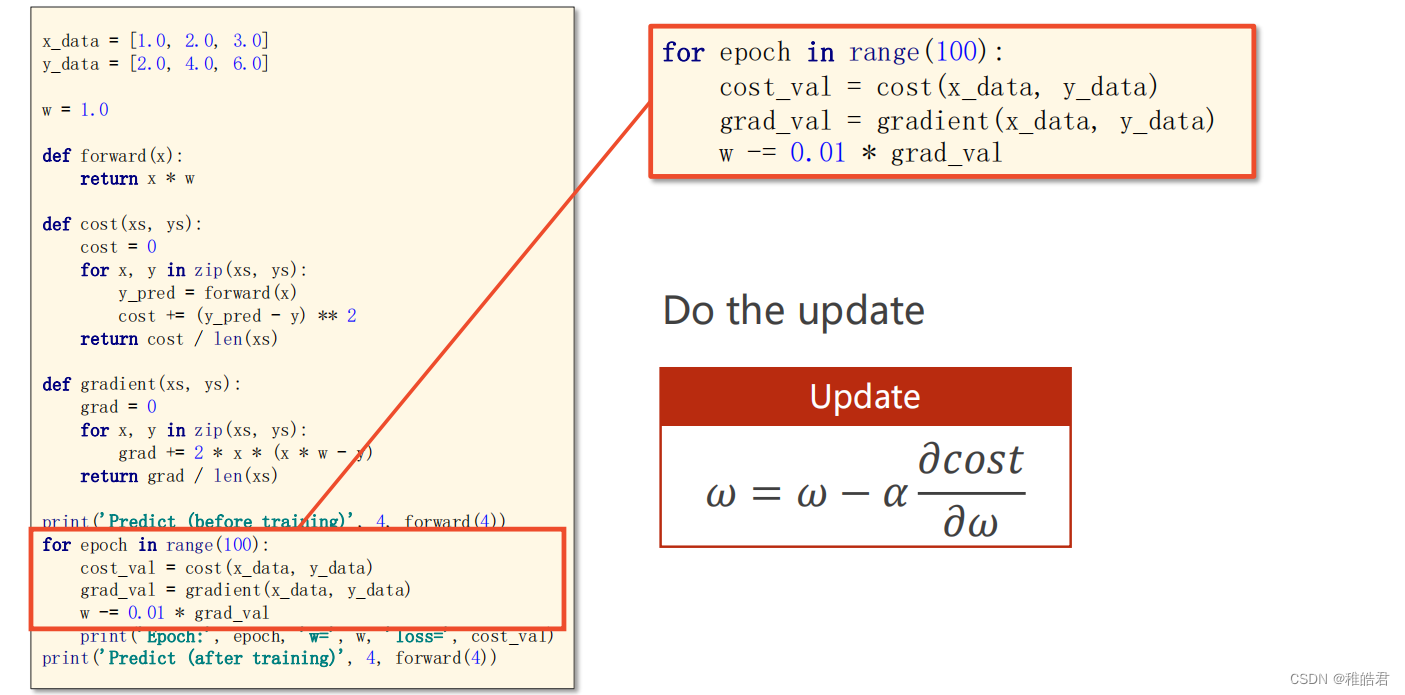
代码
import matplotlib.pyplot as plt # 训练集数据 x_data = [1.0, 2.0, 3.0] y_data = [2.0, 4.0, 6.0] # 设置初始权重猜测 w = 1.0 # 前馈计算 def forward(x): return x * w # 计算损失 def cost(xs, ys): cost = 0 for x, y in zip(xs, ys): y_pred = forward(x) cost += (y_pred - y) ** 2 return cost / len(xs) # 计算梯度 def gradien(xs, ys): grad = 0 for x, y in zip(xs, ys): grad += 2 * x * (x * w - y) return grad / len(xs) print('Predict(before training)', 4, forward(4)) # 存放每轮的数据 cost_list = [] epoch_list = [] # 训练过程 for epoch in range(100): # 训练100轮 cost_val = cost(x_data, y_data) grad_val = gradien(x_data, y_data) # 更新梯度 w -= 0.01 * grad_val # 0.01 学习率 print('Epoch:', epoch, 'w = ', w, 'loss = ', cost_val) cost_list.append(cost_val) epoch_list.append(epoch) print('Predict(after training)', 4, forward(4)) # 绘图展示 plt.plot(epoch_list, cost_list) plt.xlabel('Epoch') plt.ylabel('Cost') plt.show()- 1
- 2
- 3
- 4
- 5
- 6
- 7
- 8
- 9
- 10
- 11
- 12
- 13
- 14
- 15
- 16
- 17
- 18
- 19
- 20
- 21
- 22
- 23
- 24
- 25
- 26
- 27
- 28
- 29
- 30
- 31
- 32
- 33
- 34
- 35
- 36
- 37
- 38
- 39
- 40
- 41
- 42
- 43
- 44
- 45
- 46
- 47
- 48
- 49
- 50
- 51
实现效果
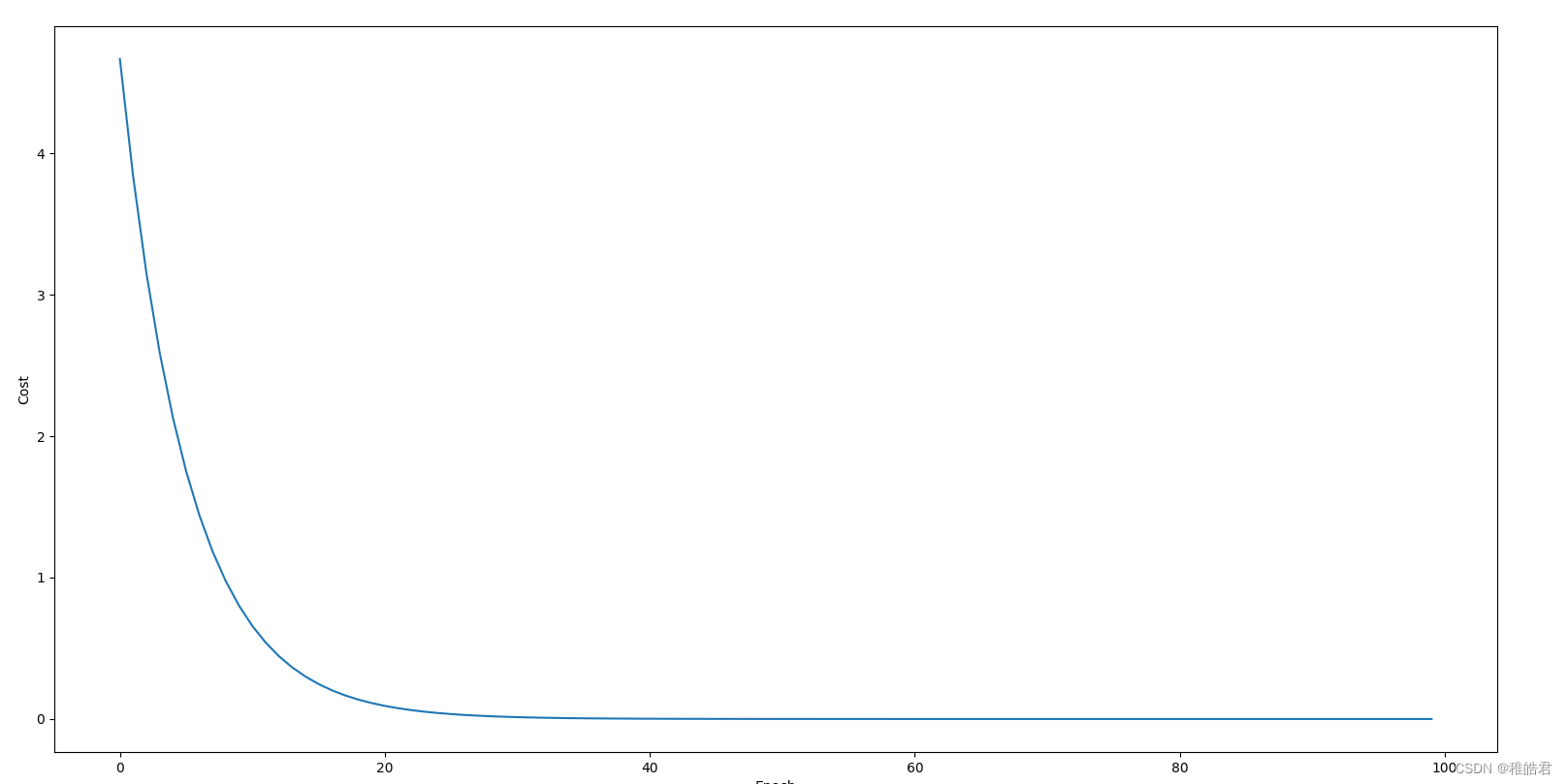
随机梯度下降
使用随机梯度下降对上述问题进行求解,随机梯度下降法和梯度下降法的主要区别在于:
1、损失函数由计算所有训练数据的损失,更改为计算一个训练数据的损失。
2、梯度函数由计算所有训练数据的梯度,更改为计算一个训练数据的梯度。问题分析

编程实现
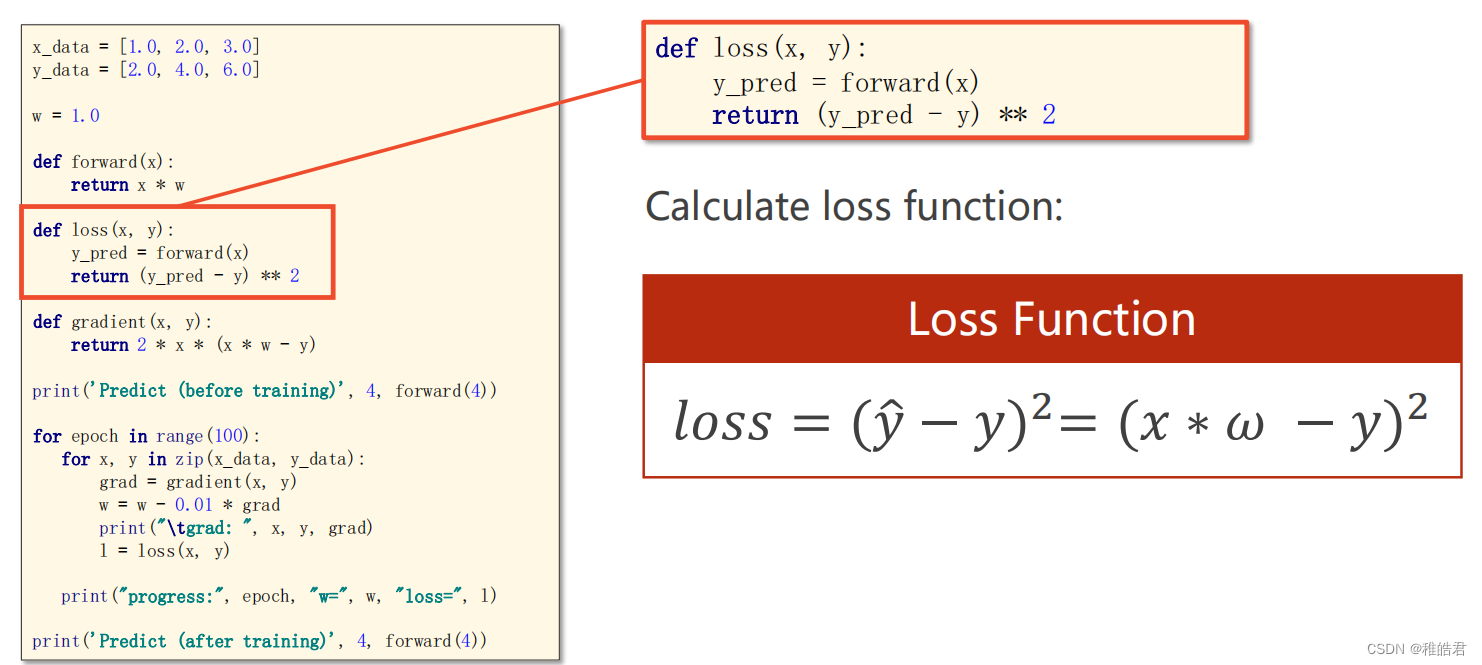

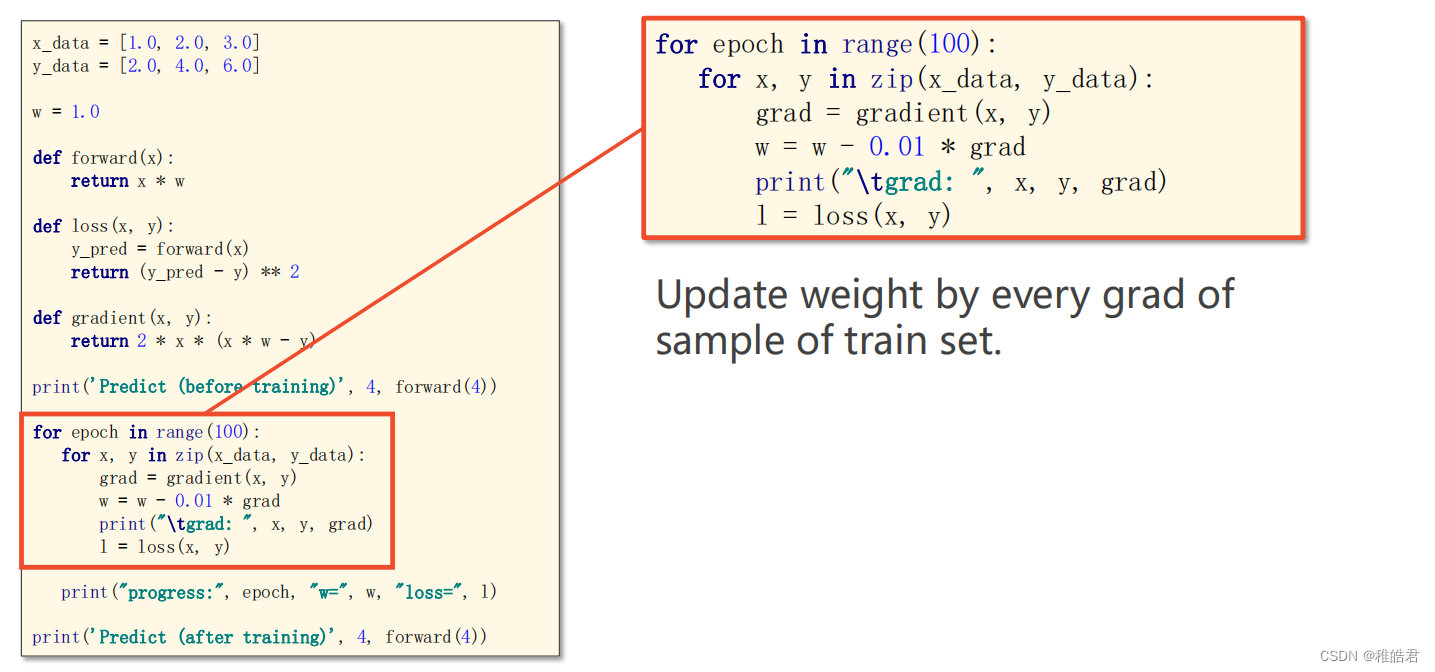
代码
import matplotlib.pyplot as plt # 训练集数据 x_data = [1.0, 2.0, 3.0] y_data = [2.0, 4.0, 6.0] # 设置初始权重猜测 w = 1.0 # 前馈计算 def forward(x): return x * w # 计算损失 def loss(x, y): y_pred = forward(x) return (y_pred - y) ** 2 # 计算梯度 def gradien(x, y): return 2 * x * (x * w - y) print('Predict(before training)', 4, forward(4)) # 存放每轮的数据 loss_list = [] epoch_list = [] # 训练过程 for epoch in range(100): # 训练100轮 for x, y in zip(x_data, y_data): grad = gradien(x, y) w = w - 0.01 * grad print('\tgrad:', x, y, grad) l = loss(x, y) epoch_list.append(epoch) loss_list.append(l) print('Predict(after training)', 4, forward(4)) # 绘图展示 plt.plot(epoch_list, loss_list) plt.xlabel('Epoch') plt.ylabel('Loss') plt.show()- 1
- 2
- 3
- 4
- 5
- 6
- 7
- 8
- 9
- 10
- 11
- 12
- 13
- 14
- 15
- 16
- 17
- 18
- 19
- 20
- 21
- 22
- 23
- 24
- 25
- 26
- 27
- 28
- 29
- 30
- 31
- 32
- 33
- 34
- 35
- 36
- 37
- 38
- 39
- 40
- 41
- 42
- 43
- 44
- 45
- 46
实现效果
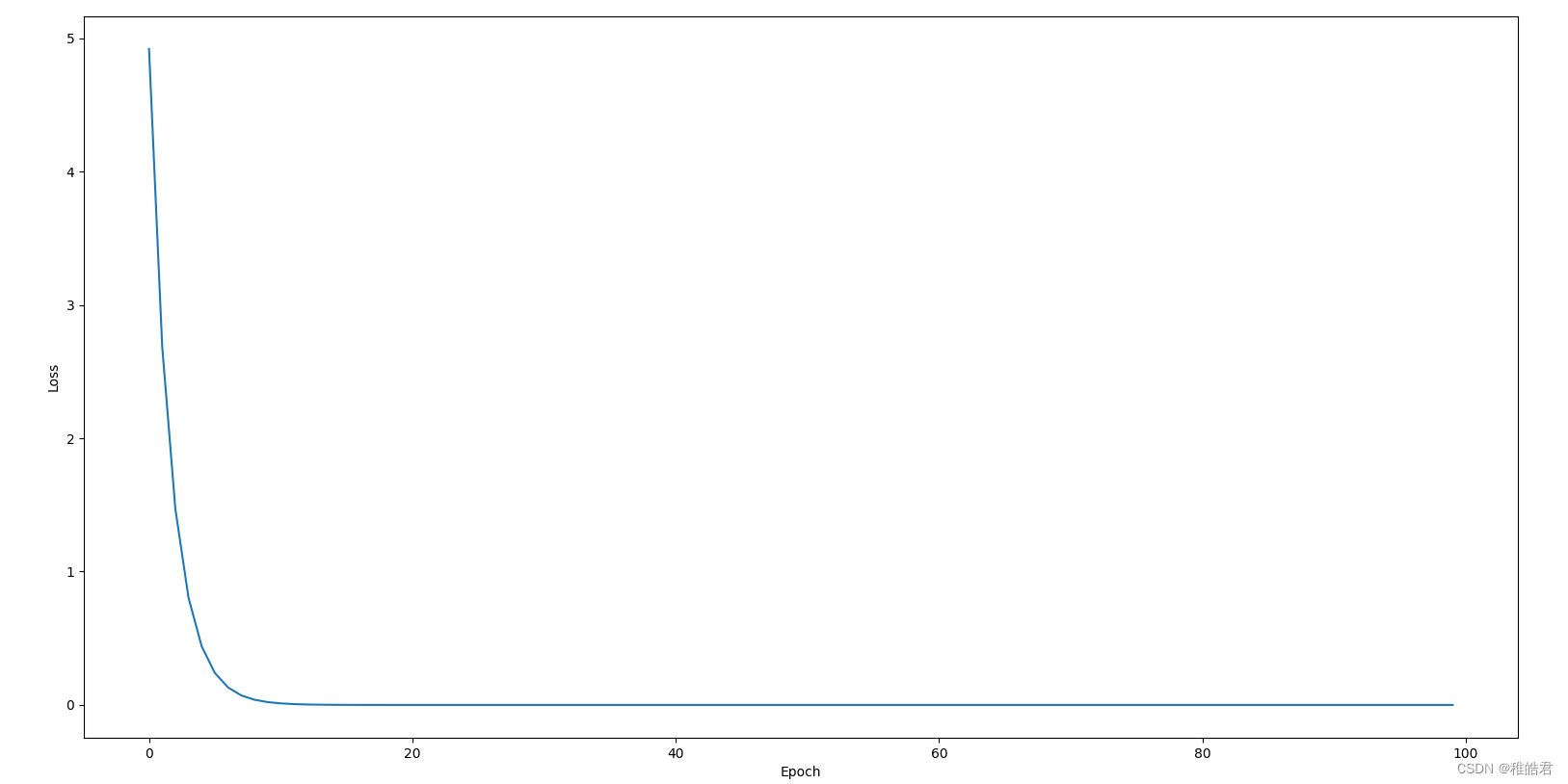
参考资料
传送门梯度下降算法
-
相关阅读:
思维导图在初中化学“物质构成的奥秘”教学中的应用
【云原生与5G】微服务加持5G核心网
[RoarCTF 2019]Easy Calc
axios
38 | Linux 磁盘空间异常爆满
uniapp开发ios上线(在win环境下使用三方)
PB:自动卷滚条
ClickHouse(03)ClickHouse怎么安装和部署
C++ 中的 string::npos 示例
深度解析Kafka中的消息奥秘
- 原文地址:https://blog.csdn.net/m0_46669450/article/details/133826082